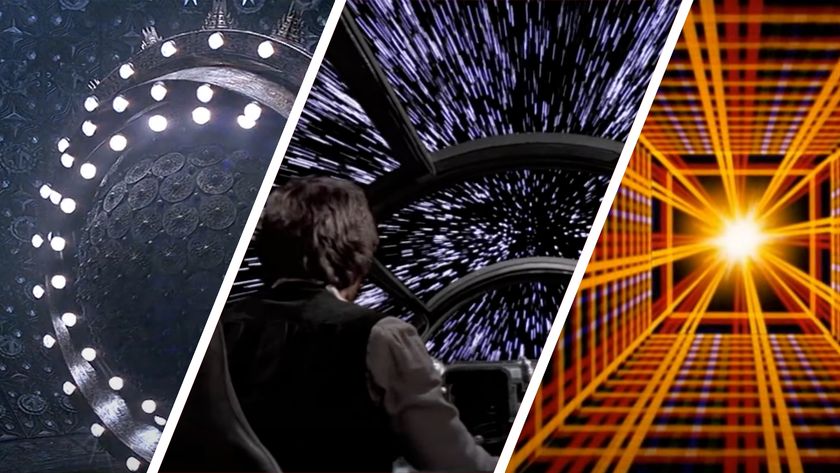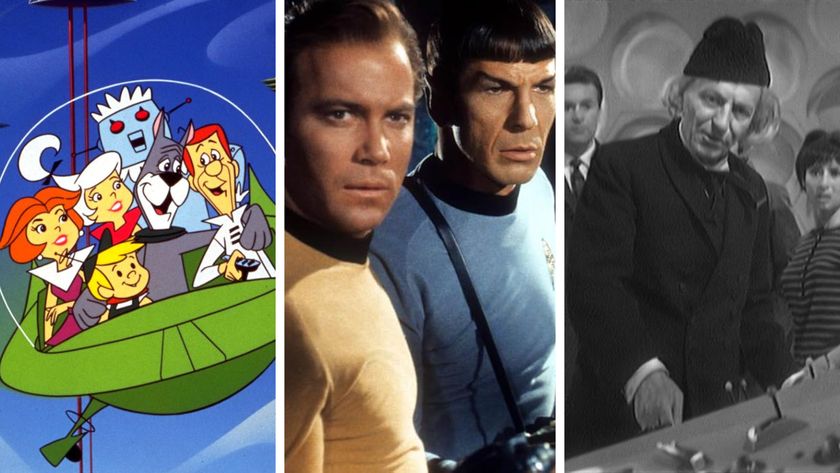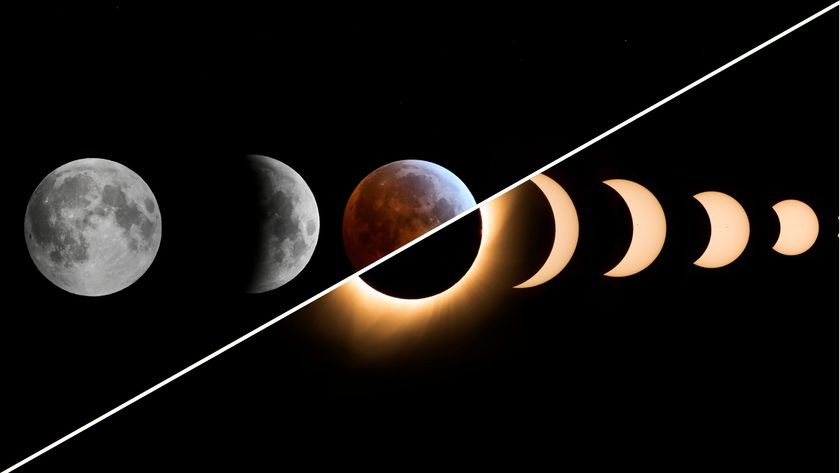What are wormholes?
Maths has predicted wormholes, but for now, these bridges through space-time remain hypothetical.
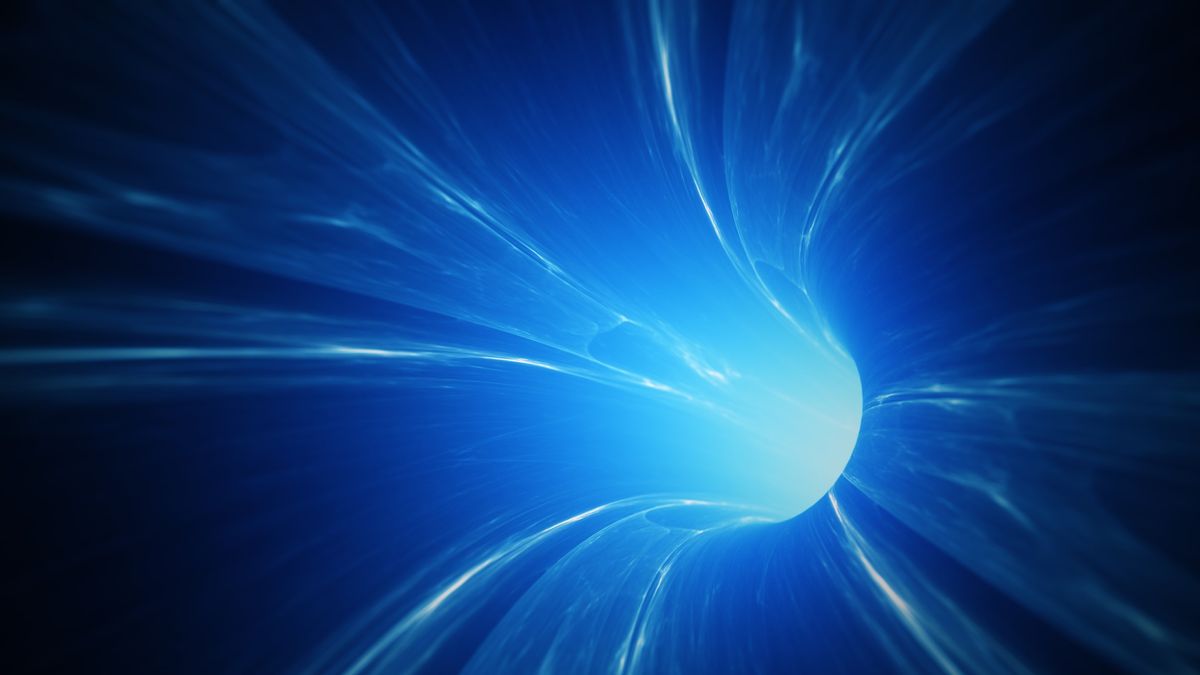
The wormhole theory postulates that a theoretical passage through space-time could create shortcuts for long journeys across the universe.
Wormholes are predicted by the theory of general relativity.
But be wary: wormholes bring with them the dangers of sudden collapse, high radiation and dangerous contact with exotic matter.
Wormhole Q&A with an expert
We asked physicist Robert Kehoe, some frequently asked questions about wormholes.

Robert Kehoe is a physicist currently studying the nature of the accelerating expansion of the universe. He is a lead researcher on the Dark Energy Spectroscopic Instrument (DESO), which is creating a far-reaching map of our universe. His research has also included work in particle physics, including contributing to the discovery of the Higgs boson, a previously only theoretical subatomic particle that allows for things to have mass.
Are wormholes theoretically possible?
A wormhole is thought to be essentially a tunnel from one place in space to another. When you have a massive object in spacetime, it basically creates a curvature of the spacetime in the nearby region.
As you get more and more mass, we expect that that curvature becomes more and more extreme. We think such objects occur in the universe, and they are what we call a black hole, where light cannot escape due to this extreme curvature of spacetime.
We think what happens is, at some point, if the mass of an object becomes large enough, the other forces of nature besides gravity can’t support the matter, and it becomes a black hole. You could think about this as one side of a wormhole.
Could you have a situation in which the curvature is extreme enough to connect up with something analogous on the other side somewhere else in spacetime? Theoretically, that could be true.
Has a wormhole ever been found?
No. We have a substantial amount of evidence for the existence of black holes. But there's been no wormholes found.
Are there different types of wormholes?
There are different theoretical implementations of our theory of gravitation, called general relativity, that would describe wormholes with somewhat different properties. For instance, one of the big distinctions in the types of wormholes that are described are whether or not they are traversable — by that I mean, whether you can go from one end to another.
So yes, in that sense, there could be different types of wormholes.
When was the wormhole theory created?
Wormholes were first theorized in 1916, though that wasn't what they were called at the time. While reviewing another physicist's solution to the equations in Albert Einstein's theory of general relativity, Austrian physicist Ludwig Flamm realized another solution was possible. He described a "white hole," a theoretical time reversal of a black hole. Entrances to both black and white holes could be connected by a space-time conduit.
In 1935, Einstein and physicist Nathan Rosen used the theory of general relativity to elaborate on the idea, proposing the existence of "bridges" through space-time. These bridges connect two different points in space-time, theoretically creating a shortcut that could reduce travel time and distance. The shortcuts came to be called Einstein-Rosen bridges, or wormholes.
"The whole thing is very hypothetical at this point," said Stephen Hsu, a professor of theoretical physics at the University of Oregon, told our sister site, LiveScience. "No one thinks we're going to find a wormhole anytime soon."
Wormholes contain two mouths, with a throat connecting the two, according to an article published in the Journal of High Energy Physics (2020). The mouths would most likely be spheroidal. The throat might be a straight stretch, but it could also wind around, taking a longer path than a more conventional route might require.
Einstein's theory of general relativity mathematically predicts the existence of wormholes, but none have been discovered to date. A negative mass wormhole might be spotted by the way its gravity affects light that passes by.
Certain solutions of general relativity allow for the existence of wormholes where the mouth of each is a black hole. However, a naturally occurring black hole, formed by the collapse of a dying star, does not by itself create a wormhole.
Through the wormhole
Science fiction is filled with tales of traveling through wormholes. But the reality of such travel is more complicated, and not just because we've yet to spot one.
The first problem is size. Primordial wormholes are predicted to exist on microscopic levels, about 10–33 centimeters. However, as the universe expands, it is possible that some may have been stretched to larger sizes.
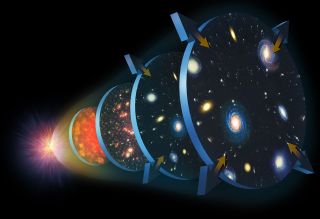
Another problem comes from stability. The predicted Einstein-Rosen wormholes would be useless for travel because they collapse quickly.
"You would need some very exotic type of matter in order to stabilize a wormhole," said Hsu, "and it's not clear whether such matter exists in the universe."
But more recent research found that a wormhole containing "exotic" matter could stay open and unchanging for longer periods of time.
Exotic matter, which should not be confused with dark matter or antimatter, contains negative energy density and a large negative pressure. Such matter has only been seen in the behavior of certain vacuum states as part of quantum field theory.
If a wormhole contained sufficient exotic matter, whether naturally occurring or artificially added, it could theoretically be used as a method of sending information or travelers through space, according to our sister website Live Science. Unfortunately, human journeys through the space tunnels may be challenging.
"The jury is not in, so we just don't know," physicist Kip Thorne, one of the world's leading authorities on relativity, black holes and wormholes, told Space.com. "But there are very strong indications that wormholes that a human could travel through are forbidden by the laws of physics. That's sad, that's unfortunate, but that's the direction in which things are pointing."
How do wormholes work?
Wormholes may not only connect two separate regions within the universe, they could also connect two different universes. Similarly, some scientists have conjectured that if one mouth of a wormhole is moved in a specific manner, it could allow for time travel.
"You can go into the future or into the past using traversable wormholes," astrophysicist Eric Davis told LiveScience. But it won't be easy: "It would take a Herculean effort to turn a wormhole into a time machine. It's going to be tough enough to pull off a wormhole."
However, British cosmologist Stephen Hawking has argued that such use is not possible.
"A wormhole is not really a means of going back in time, it's a short cut, so that something that was far away is much closer," according to NASA's Eric Christian.
Although adding exotic matter to a wormhole might stabilize it to the point that human passengers could travel safely through it, there is still the possibility that the addition of "regular" matter would be sufficient to destabilize the portal.
Today's technology is insufficient to enlarge or stabilize wormholes, even if they could be found. However, scientists continue to explore the concept as a method of space travel with the hope that technology will eventually be able to utilize them.
"You would need some of super-super-advanced technology," Hsu said. "Humans won't be doing this any time in the near future."
Additional resources
Which of Albert Einsteins theories proved correct? Read NASA's article about 10 things Einstein got right to find out. To see an artist's impression of a wormhole, watch this short clip from ESA's movie "15 Years of Discovery".
Bibliography
"Phantom energy traversable wormholes". Physical Review D (2005). https://journals.aps.org/prd/abstract/10.1103/PhysRevD.71.084011
"Wormholes in spacetime and their use for interstellar travel". American Journal of Physics (1987). https://aapt.scitation.org/doi/abs/10.1119/1.15620
"The General Theory of Relativity". The Meaning of Relativity (1922). https://link.springer.com/chapter/10
"Multi-mouth Traversable Wormholes". Journal of High Energy Physics (2020) https://www.researchgate.net/publication/347125665_Multi-mouth_Traversable_Wormholes
Join our Space Forums to keep talking space on the latest missions, night sky and more! And if you have a news tip, correction or comment, let us know at: community@space.com.
Get the Space.com Newsletter
Breaking space news, the latest updates on rocket launches, skywatching events and more!

Nola Taylor Tillman is a contributing writer for Space.com. She loves all things space and astronomy-related, and enjoys the opportunity to learn more. She has a Bachelor’s degree in English and Astrophysics from Agnes Scott college and served as an intern at Sky & Telescope magazine. In her free time, she homeschools her four children. Follow her on Twitter at @NolaTRedd
- Rebecca SohnContributing Writer









